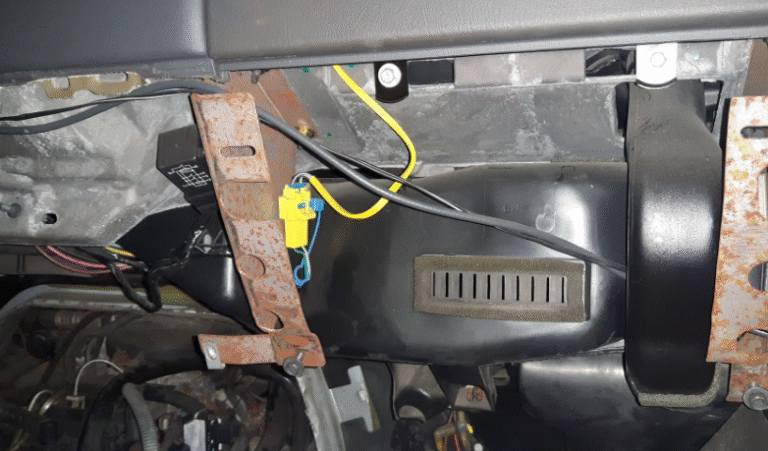
Luminous Scans
Luminous scans play a significant role in various fields, including medical diagnostics, cancer detection, biomedical research, and even industrial applications. These scans offer real-time, high-resolution imaging, making it possible to track diseases, examine molecular activity, and develop novel treatments. Unlike traditional imaging techniques such as CT scans and MRIs, luminous scans utilize light emission to achieve more accurate, non-invasive observations of biological tissues, cells, and molecular activities. They have become essential in enhancing our understanding of various health conditions, with applications in medical diagnostics, research, and industries like aerospace, art conservation, and manufacturing.
The Role of Luminescence in Advanced Imaging
Luminescence imaging refers to the process where a substance absorbs energy and emits light in the form of photons. This process is highly beneficial in biomedical research and diagnostics, enabling scientists and physicians to visualize intricate cellular processes and molecular interactions with remarkable clarity. A specialized form of luminescence imaging, known as fluorescence microscopy, is commonly used in diagnostics to capture detailed high-resolution images, allowing for the monitoring of dynamic biological processes in real time.
Broad Applications of Luminous Scans Across Multiple Sectors
Luminous scans offer a wide range of applications across fields like medical imaging, drug development, cancer detection, tissue regeneration, and non-destructive testing in industries such as aerospace. In the medical field, luminous scans enable non-invasive diagnostic procedures, providing valuable insights into diseases like cancer, Alzheimer’s, and heart conditions without the need for invasive techniques. In research, luminous scans are indispensable for live-cell imaging, biomedical research, and drug testing, playing a key role in the progress of personalized medicine and precision imaging.
The Science Behind Luminous Scans
Understanding Luminescence and Bioluminescence
At the heart of luminous scans is the concept of luminescence—the emission of light from a material not triggered by heat. This natural phenomenon, known as bioluminescence, is commonly observed in organisms such as fireflies and certain marine species. Researchers have harnessed this ability by developing fluorescent proteins and quantum dots that emit light when exposed to specific wavelengths. These molecules are crucial in molecular imaging, as they allow scientists to track biological molecules in real-time, such as markers for tumors or indicators of neurodegenerative diseases.
How Light Emission Enhances Imaging Precision
In luminous scans, particular fluorescent probes or quantum dots are introduced into the body or onto tissue samples. These probes are engineered to bind with specific proteins or biological markers, emitting light when activated by external light sources. This emitted light is captured by optical cameras equipped with photomultiplier tubes or CCD sensors, which convert the light into an image. This method produces high-resolution images of biological processes, offering insights into conditions that would otherwise be undetectable. The technique is especially useful in monitoring tumors, brain activity, and neurodegenerative diseases like Parkinson’s.
The Importance of Fluorescent Probes and Quantum Dots
Fluorescent probes and quantum dots play a key role in advancing imaging at the molecular level. These small, specially designed particles emit bright light when exposed to certain wavelengths, making them highly sensitive tools for detailed cellular imaging in living organisms. Quantum dots, in particular, are known for their superior brightness and stability compared to traditional fluorescent markers, making them ideal for real-time monitoring in medical applications. Through techniques like cellular and molecular imaging, researchers can observe disease progression and evaluate the effectiveness of treatments, particularly in cancer diagnosis and drug development.
The Technology Behind Luminous Scans
The Process of Excitation and Emission in Optical Imaging
The process driving luminous scanning involves exciting fluorescent molecules or quantum dots with light, causing them to emit a different wavelength as they return to their original energy state. This phenomenon—known as excitation and emission of light—is captured by an imaging system that records the light emissions, producing detailed images. Optical imaging systems used in luminous scans enable scientists and healthcare professionals to observe biological processes with remarkable precision, all without the need for invasive procedures.
Advanced Imaging Tools for Luminous Scans
To capture the emitted light, sensitive devices such as photomultiplier tubes (PMTs) and CCD sensors are employed. These instruments are designed to detect even the faintest light emissions from fluorescent proteins or quantum dots. Specialized optical cameras, equipped with filters and imaging software, help create a high-resolution visual representation of the biological structures under investigation. The combination of these advanced tools allows for the clear, non-invasive capture of diagnostic images, improving treatment decisions and patient care.
Benefits of Luminous Scans Over Conventional Imaging
Luminous scans offer distinct advantages over traditional imaging methods like MRIs and CT scans. Unlike MRI and CT, which rely on magnetic fields and X-rays respectively, luminous scans provide non-destructive testing and non-invasive diagnostics. They also allow for real-time imaging, which is crucial for monitoring dynamic changes in biological systems. This is particularly beneficial when tracking disease progress, such as in cancer detection or neurodegenerative disease imaging.
Diverse Applications of Luminous Scans Across Different Fields
Enhancing Medical Diagnostics
Detecting Cancer and Monitoring Tumors
Luminous scans are proving to be essential in the early detection and diagnosis of cancers, such as breast, lung, and prostate cancer. By using fluorescent markers that target cancer cells or tumor markers, doctors can monitor tumor growth in real time. These scans facilitate non-invasive cancer tracking, offering an efficient tool for personalized cancer treatment. Tumor tracking becomes much more accurate, providing critical information for timely and effective treatment decisions.
Brain Imaging and Mapping Neural Activity
One of the most exciting uses of luminous scans is in the field of neural imaging. Bioluminescence brain imaging enables researchers to trace neural pathways and study conditions such as Alzheimer’s and Parkinson’s diseases. By tagging specific areas of the brain with fluorescent probes, scientists can observe the degeneration of neural tissue, facilitating early diagnosis and the development of more targeted treatments for these debilitating disorders.
Real-Time Monitoring of Medical Conditions
Luminous scans enable the real-time monitoring of a variety of diseases, including cardiovascular and neurodegenerative conditions. This allows doctors to observe how a disease evolves and how the body responds to treatments over time. The ability to collect and analyze this real-time data gives healthcare providers the flexibility to adjust treatments promptly for optimal patient outcomes.
Biomedical Research: Unlocking New Insights into Health
Advancements in Molecular and Cellular Imaging
Luminous scans have become a key tool in biomedical research, providing researchers with the ability to monitor and understand molecular and cellular processes. By employing fluorescent proteins and quantum dots, scientists can track the movement and interaction of biological molecules within living cells. This allows for a deeper understanding of complex biological systems and disease mechanisms, playing a critical role in drug testing and tissue regeneration research.
The Role of Luminous Scans in Drug Discovery and Development
In the field of pharmaceutical development, luminous scans have revolutionized the process of drug discovery. By utilizing fluorescent probes to observe how potential drugs interact with cells and tissues, researchers can efficiently assess their effectiveness. This method accelerates the identification of promising treatments, allowing for more refined drugs to enter clinical trials. Luminous scans have significantly enhanced the precision and speed of drug testing, ensuring the development of more effective therapies.
Exploring Tissue Regeneration and Healing with Luminous Imaging
Luminous scans are also extensively used to study tissue regeneration and the healing process. This type of imaging provides a unique perspective on how cells and tissues react to various treatments, such as stem cell therapy or wound healing. Through luminous scans, researchers gain valuable insights into cellular regeneration, which ultimately helps improve treatment options and patient recovery outcomes.
The Advantages of Luminous Scans in Modern Healthcare
Exceptional Image Detail and Clarity for Accurate Diagnosis
Luminous scans offer unmatched imaging clarity, producing highly detailed visualizations of biological activities at the molecular level. This superior resolution makes them indispensable in medical diagnostics and biomedical research, where pinpoint precision is essential for accurate disease detection and treatment development.
Non-Invasive, Non-Destructive Approach to Diagnostics
One of the primary advantages of luminous scans is their non-invasive and non-destructive nature. Unlike traditional imaging methods such as CT scans or MRIs, which can involve radiation or physical intrusion, luminous scans enable detailed observations of biological systems without harm or discomfort to patients. This makes them ideal for monitoring sensitive areas, such as the brain or tumors while ensuring patient safety throughout the diagnostic process.
Real-Time Monitoring for Dynamic Disease Tracking
Luminous scans excel in their ability to provide real-time imaging, a critical feature for tracking diseases like cancer or neurological conditions. This capability enables healthcare providers to observe the progression of tumors or monitor how brain cells react to treatments, allowing for immediate adjustments in therapeutic strategies to optimize patient care.
Enhanced Diagnostic Accuracy for Quicker, Smarter Decisions
Thanks to their high-resolution imaging and real-time monitoring, luminous scans improve the accuracy of diagnoses and accelerate decision-making processes. This is especially beneficial in fields like cancer diagnosis and drug development, where early detection and rapid intervention can greatly influence the outcome of treatment plans.
Limitations and Challenges of Luminous Scans
Overcoming Technical Hurdles: Calibration and Sensitivity Issues
Despite their many advantages, luminous scans do come with some challenges. One of the primary concerns is ensuring the proper calibration and sensitivity of the imaging equipment. Accurate calibration of optical imaging systems and photomultiplier tubes is critical for obtaining clear, consistent results. Improper calibration can lead to distorted or unreliable images, undermining the effectiveness of diagnostic procedures.
The Cost and Accessibility Barriers of Luminous Scanning Technology
While luminous scans offer many benefits, they can be expensive to implement. The specialized equipment, including cameras, sensors, and probes, can be costly to purchase and maintain. Furthermore, the advanced expertise required to operate these systems makes them less accessible in certain regions or for smaller healthcare facilities, creating disparities in access to this cutting-edge technology.
Ethical and Privacy Considerations in Medical Imaging
As with any advanced medical technology, luminous scans raise important ethical questions, particularly in regard to patient consent and data privacy. The use of luminous scans in diagnostics and personalized medicine must adhere to strict privacy regulations, such as those outlined by the FDA and EMA, to ensure that patient information is protected and used responsibly.
Key Facts about Luminous Scans:
- Non-Invasive Imaging:
Luminous scans are non-invasive, meaning they provide detailed biological insights without the need for surgery or harmful radiation, making them safer for patients compared to traditional imaging techniques like CT scans and MRIs.
- Real-Time Disease Monitoring:
These scans enable real-time tracking of diseases, such as cancer, allowing for continuous monitoring of tumor growth and response to treatment, which helps doctors make quicker, more informed decisions.
- High-Resolution Visualization:
Luminous scans use fluorescent probes or quantum dots that emit light when activated, providing high-resolution images that reveal intricate details of biological processes and molecular activity.
- Broad Medical and Industrial Applications:
While primarily used in medical fields like cancer detection, drug development, and tissue regeneration, luminous scans are also applied in aerospace for non-destructive testing and in art conservation for analyzing and preserving cultural artifacts.
- Advanced Molecular Imaging:
The technology behind luminous scans allows researchers to track molecular-level interactions in living organisms, making it an essential tool for biomedical research, drug testing, and understanding complex diseases.
Conclusion: The Future of Luminous Scans in Medicine
Luminous scans represent a transformative shift in medical imaging, offering unparalleled insights into the molecular and cellular mechanisms behind diseases and their treatments. From cancer diagnostics to drug development, luminous scans are reshaping how healthcare professionals and researchers approach the understanding and treatment of various health conditions. With ongoing innovations in quantum dots imaging, real-time monitoring, and artificial intelligence, the future of luminous scans looks incredibly promising, bringing more accurate, personalized, and efficient medical solutions to patients worldwide.
Frequently Asked Questions
How do luminous scans function?
Luminous scans operate by introducing special fluorescent markers or quantum dots that emit light when exposed to a specific type of light. The light they release is then captured, allowing for the creation of high-resolution images that reveal biological processes and tissue structures.
Are luminous scans considered non-invasive?
Absolutely! Luminous scans are both non-invasive and non-destructive, meaning they don’t require surgery or cause harm to the body. This makes them particularly useful for monitoring various diseases and conditions safely.
Can luminous scans be used to identify cancer?
Yes, luminous scans are capable of detecting cancer by tracking specific tumor markers and observing how tumors develop in real time. This ability helps doctors make more accurate diagnoses and tailor treatment plans to each patient’s needs.
Which industries benefit from luminous scans?
Luminous scans are widely used in the medical field for diagnostics, research, and drug development. They’re also valuable in sectors like aerospace for testing materials without causing damage and in art conservation, where they help analyze and preserve historical artifacts.
Keep an eye for more latest news & updates on The Washington Vibes!





